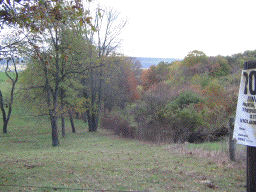 |
Ecology Community Status in your State's Ecosystem "Organisms respond to changes and vagaries in the environment. Organisms, unlike non-living objects, survive because of the ability to respond. Responses take many forms, which we can categorize as morphological, physiological, or behavioral." Basic Ecology - A Guide to the study of ecosystems Wikibooks |
1. Read - Threatened, Endangered, & Extinct - by Sanford S. Smith
Watch "Endangered Means There Is Still Time" online slide show
2. Evaluate the biodiversity of your state by assessing the population status of its organisms.
![]() Make a Semantic Feature Analysis Chart (a.k.a. - Table or Matrix)
Make a Semantic Feature Analysis Chart (a.k.a. - Table or Matrix)
Across the first row of the columns (skip the first column)
Enter titles: Common, Threatened, Endangered, Extinct, I've seen it
Down the rows (beginning with the second row) - Enter at least one species of: plants, trees, mammals, insects, birds, covered in this fields, meadows and fencerows study unit. Add a species that is found in your community's fields and meadows, which is not mentioned in this unit.
Place a
checkmark in the correct column for each species in your state.
Each state has a wildlife agency. They usually provide information on threatened and endangered species. Look for their web site or perhaps they have published a book or pamphlet about local species. Wildlife in Pennsylvania
Examine the chart - What have you found?
How many of the species are common?
What percentage of the species are threatened?
What is the ratio of common species to endangered species?
Identify one species that is considered endangered in your state.
What, if anything, should be done to help it survive?
Explore more:
Basic Ecology A Free Online Textbook
The status of American Eagles in your state - a problem based leaning activity
Map and Inventory Trees in your community
Plants and People | Milkweed and Monarch Butterflies | Bluebirds Project
Fields, Meadows, and Fencerows: Habitat / Mammals / Birds / Butterflies & Moths / Trees & Plants / Conclusion
Ecology Vocabulary Exercise | Life Cycles | Bird Facts Table | Evaluate Ecodilemmas | Make an A to Z book
Citizen Scientist - Collect some data | Collecting data Activity doc. /pdf | Outside - In Showcase Project
Bats are our Buddies | Screech Owls activity | Plan a School Habitat Garden Project | Bluebirds Project
Wildflowers info | Milkweeds & Monarch Butterfly Mania | Water and watershed studies | Nature
Pennsylvania Science Anchors Science NetLinks Benchmark 5 - The Living Environment D. Interdependence of Life - " In all environments freshwater, marine, forest, desert, grassland, mountain, and others organisms with similar needs may compete with one another for resources, including food, space, water, air, and shelter. Two types of organisms may interact with one another in several ways: They may be in a producer/consumer, predator/prey, or parasite/host relationship." |
![]() Save a tree - use a digital answer format - Highlight the text of the title, directions and questions. Copy the text. Paste it in a word processing document. Save the document in your folder. Answer on the word processing document in an easily read, contrasting color or font. (No yellow, avoid artistic fonts like: Symbols,
Save a tree - use a digital answer format - Highlight the text of the title, directions and questions. Copy the text. Paste it in a word processing document. Save the document in your folder. Answer on the word processing document in an easily read, contrasting color or font. (No yellow, avoid artistic fonts like: Symbols, ![]() ,
, ![]() , &
, & ![]() fonts). Save frequently as you work. Make Your Own Printed answer sheet
fonts). Save frequently as you work. Make Your Own Printed answer sheet
The goal of this web project is to inform people through research while employing higher order thinking skills. This study unit encourages the use of free Internet information resources. Activities develop writing, information literacy, technology and mathematics skills.